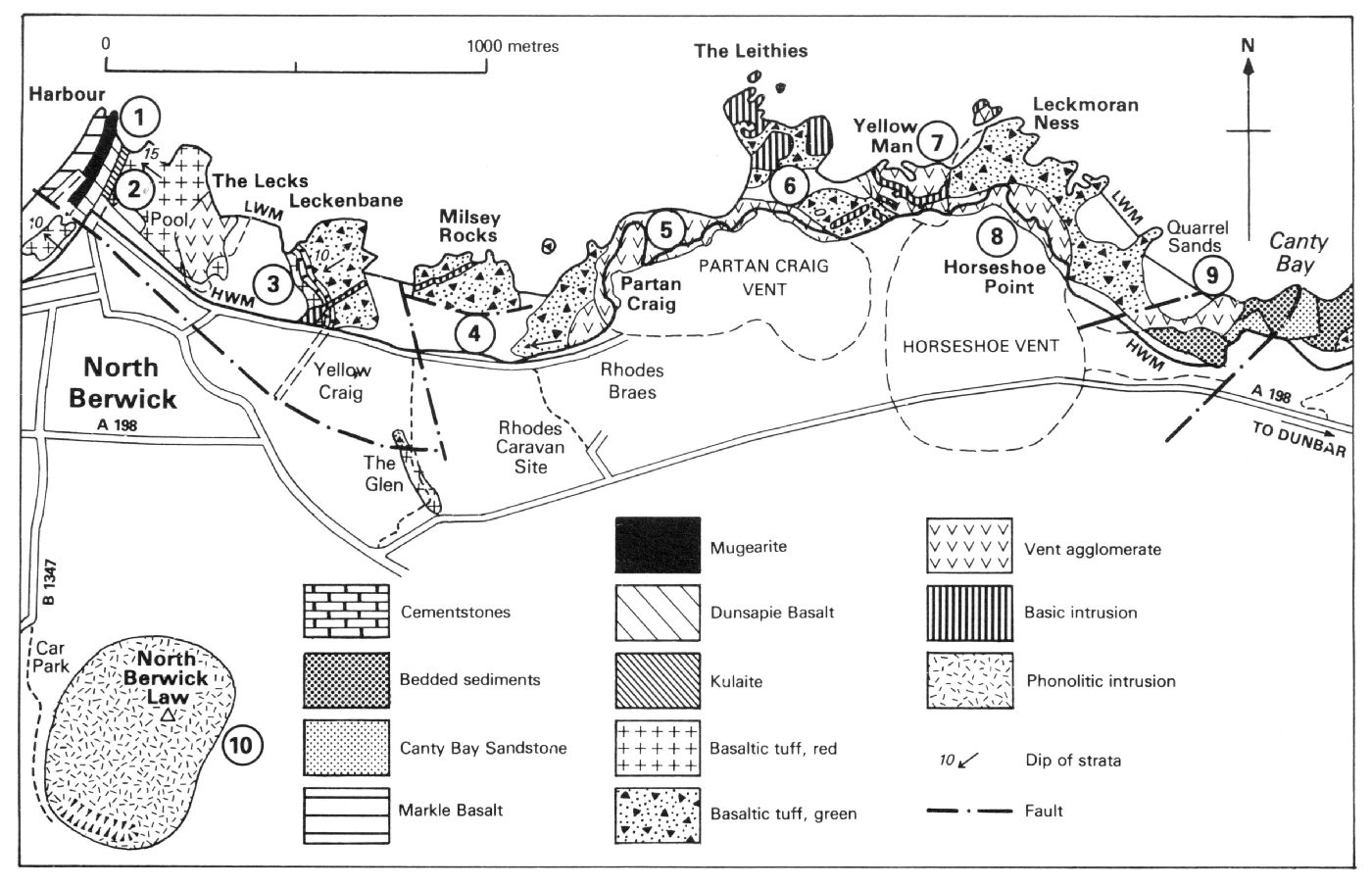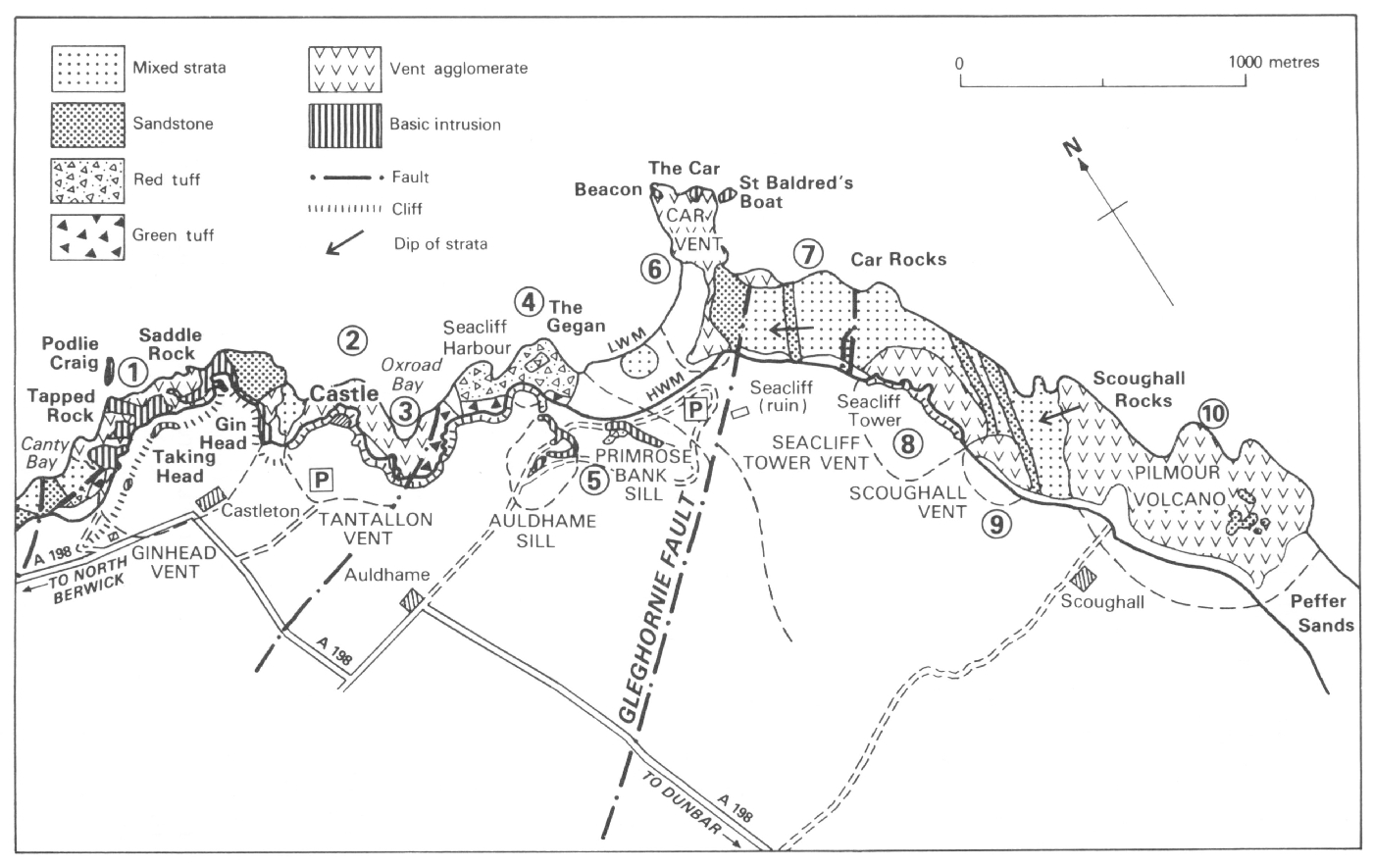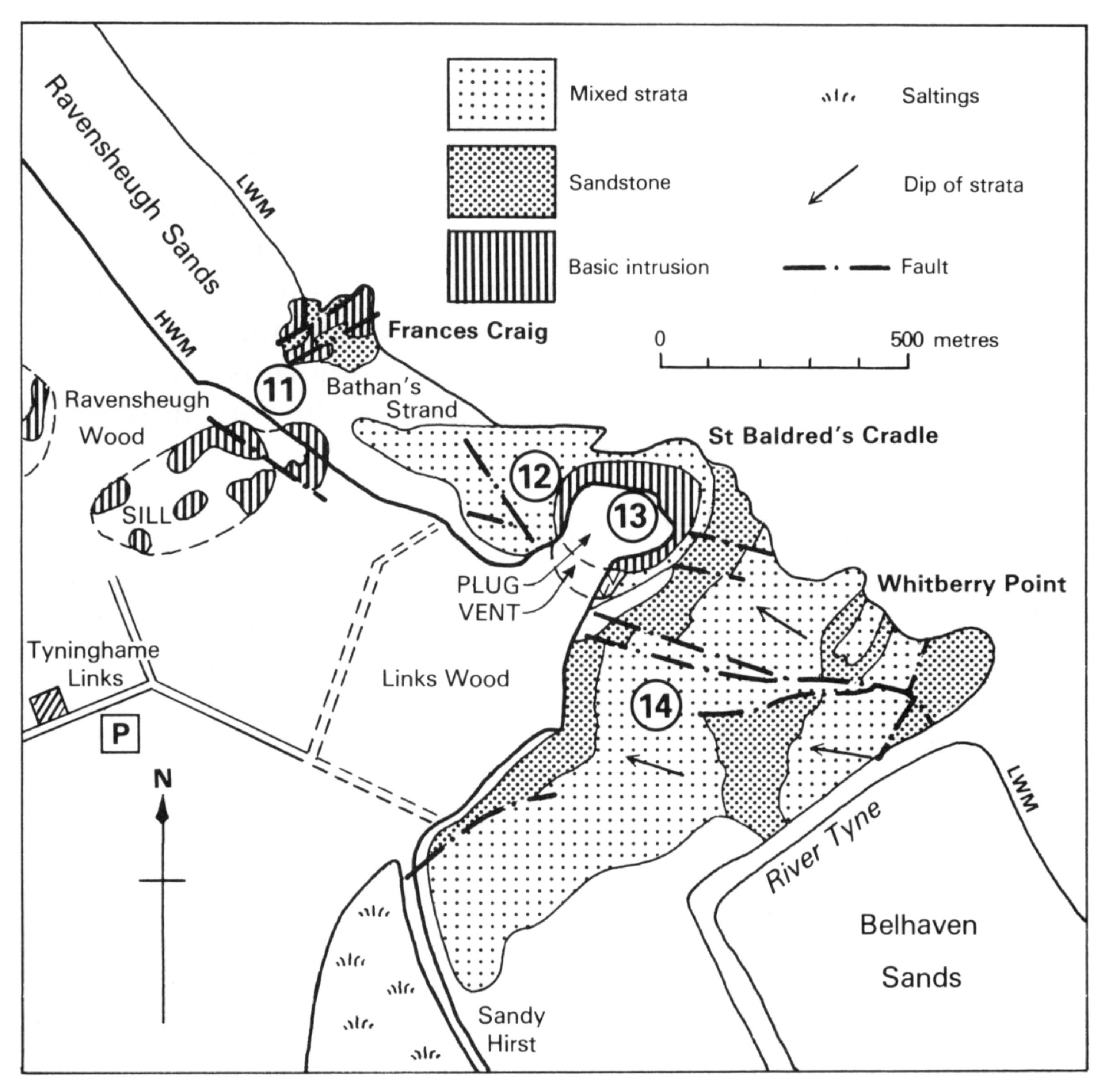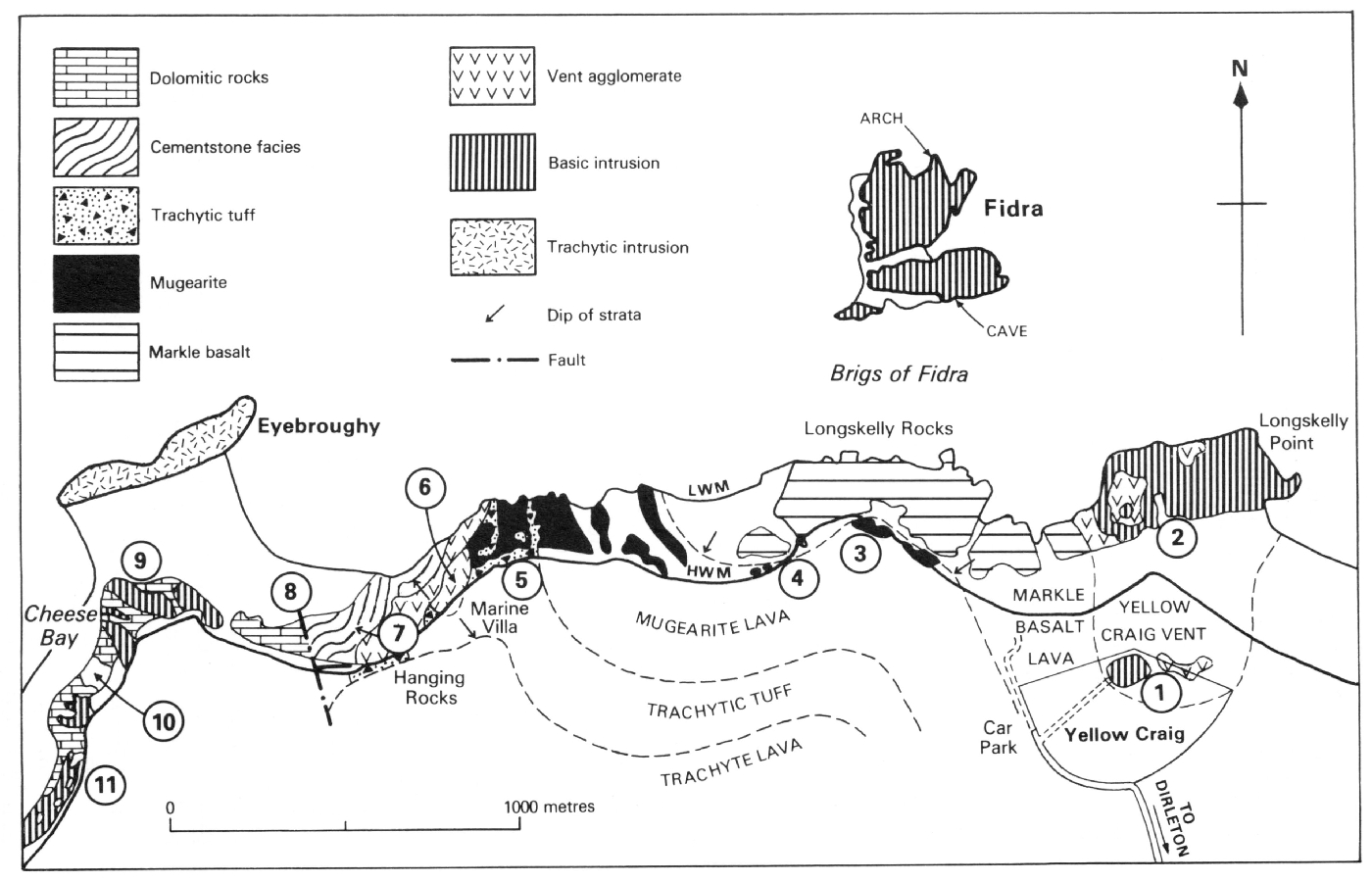North Berwick
A.D. McAdam
O.S. 1:500110 Sheets 66 Edinburgh and 67 Duns & Dunbar B.G.S. I :50000 Sheets 33W liaddington and 33E Dunbar Route:
Three excursions are described to show typical examples of the volcanic and sedimentary rocks and some of the associated intrusions and volcanic vents so excellently exposed along 25 km of the North Berwick coast. The rocks are Dinantian (Calciferous Sandstone Measures) in age, and belong mainly to the volcanic facies known locally as the Garleton Hills Volcanic Rocks. The general succession is (McAdam and Tulloch, 1985):
Sediments. dolomitic. tuffaceous and cementstone facies
Trachytic tuffs and lavas—Bangley member
Basaltic lavas—Hailes member
Basaltic lavas—East Linton member
Basaltic tuffs, red
Cementstone bands North Berwick member
Basaltic tuffs. green North Berwick member
Sediments. Canty Hay Sandstone, red cementstone facies
Gentle post-Carboniferous folding and faulting has given the beds a regional dip to the west.
The volcanic succesion is thinner than in the Garleton Hills to the south, though most of the lava types are represented at North Berwick. At a late stage in the volcanicity basaltic and hasanitic sills and dykes and phonolitic volcanic plugs were intruded into these rocks. Another feature of the volcanicity is the number of tuff and agglomerate-filled volcanic vents. These were first identified as vents by Cuthbert Day, a local geologist and geochemist, who in a series of papers described the geology of the whole North Berwick coast section. The vents and their relationship were further discussed by Martin (1955) and more recently by Leys (1982). Descriptions of deep-originating granulite blocks have been given by Graham and Upton (1978).
Excursion A, which goes east from North Berwick, covers the lower part of the sequence in descending order from the basaltic lavas to the




